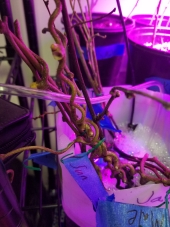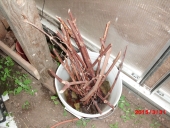




Ed wrote:
Thanks Mike: Prices seem to be coming down a bit. We have always had great luck with Burntridge, and Raintree. Someone told me that Raintree has a wholesale arm, something like Northwoods.
Will definately pick up a couple more different varieties.
Ed
Anyone who believes exponential growth can go on forever in a finite world is either a madman or an economist.




















The ultimate goal of farming is not the growing of crops, but the cultivation and perfection of human beings. - Masanobu Fukuoka




hubert cumberdale wrote:
done in a diy mist propagation system.
Anyone who believes exponential growth can go on forever in a finite world is either a madman or an economist.




The ultimate goal of farming is not the growing of crops, but the cultivation and perfection of human beings. - Masanobu Fukuoka




hubert cumberdale wrote:
no pictures, its not very fancy looking. i can explain if needed.
Anyone who believes exponential growth can go on forever in a finite world is either a madman or an economist.




The ultimate goal of farming is not the growing of crops, but the cultivation and perfection of human beings. - Masanobu Fukuoka




hubert cumberdale wrote:
its very simple to explain,
 Nonetheless, thank you.
Nonetheless, thank you.
1 mister per 10-12 inches( they come in packages of 5)
if anyone can tell me how to upload an image i can upload a drawing of the setup.
keep in mind that my 12 ft system can literally do thousands of cuttings at once. most people will only need a 2-3 ft system max unless you plan to plant acres of land. so this can be made to any scale you want, and the smaller the cheaper.

if anyone knows of a cheaper way to do the timing system i would love to hear it. 10-30 second bursts of mist every 30-60 minutes is best.
Anyone who believes exponential growth can go on forever in a finite world is either a madman or an economist.




"Limitation is the mother of good management", Michael Evanari
Location: Southwestern Oregon (Jackson County), Zone 7




The ultimate goal of farming is not the growing of crops, but the cultivation and perfection of human beings. - Masanobu Fukuoka




 1
1








Pamela Melcher
Happiness, Health, Peace and Abundance for All.




 1
1




 1
1




 1
1




 1
1




 1
1





|
You get good luck from rubbing the belly of a tiny ad:
Learn Permaculture through a little hard work
https://wheaton-labs.com/bootcamp
|


